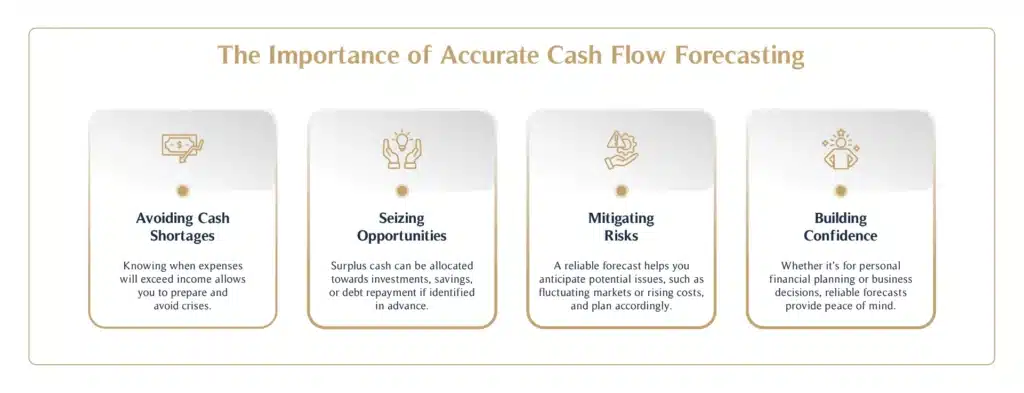Managing your finances effectively isn’t just about knowing what you have in your bank account today. It’s about planning for tomorrow, next year, and even the decades ahead. Cash flow modelling is a powerful financial planning tool that helps you map out your future financial position. It does this by forecasting your income, expenses, and investments over time.
At its core, cash flow modelling provides a clear picture of your financial health and helps you make informed decisions about your money. Whether you’re planning for retirement, purchasing a property, or growing a business, this tool ensures that your financial strategies are built on solid ground.
In this article, we’ll explore what cash flow modelling is, why it’s crucial for financial planning, and how you can integrate it into your personal or business strategy using practical tools and techniques.
Understanding Cash Flow Modelling
What is Cash Flow Modelling?
Cash flow modelling is a financial planning technique that uses your current and projected income, expenses, and investments to create a visual representation of your financial future. Think of it as a financial blueprint that helps you track how money moves in and out of your accounts. These models consider factors like earnings, bills, investments, and savings to create a comprehensive picture of your financial future.
For example, an individual might use a cash flow model to determine whether they can afford to retire comfortably, while a business might use it to plan for expansion or manage operational costs. Cash flow models are designed to give clarity, enabling better decisions based on data rather than guesswork.
The Importance of Accurate Cash Flow Forecasting
Forecasting cash flow accurately is essential for making sound financial decisions. Here’s why:
- Avoiding Cash Shortages: Knowing when expenses will exceed income allows you to prepare and avoid crises.
- Seizing Opportunities: Surplus cash can be allocated towards investments, savings, or debt repayment if identified in advance.
- Mitigating Risks: A reliable forecast helps you anticipate potential issues, such as fluctuating markets or rising costs, and plan accordingly.
- Building Confidence: Whether it’s for personal financial planning or business decisions, reliable forecasts provide peace of mind.
Types of Cash Flow Models
There are several types of cash flow models, each serving specific purposes:
- Discounted Cash Flow (DCF) Model: This method calculates the present value of expected future cash flows. It’s commonly used to assess the value of investments or business ventures.
- Free Cash Flow Model: Focuses on cash generated after deducting capital expenditures. It’s an essential tool for businesses to measure profitability and sustainability.
- Personal Cash Flow Model: Tailored for individuals, this model helps forecast day-to-day finances and long-term goals like retirement or buying a home.
By choosing the right type of model for your needs, you can gain a clearer understanding of your financial path.
The Role of Cash Flow in Financial Planning
Avoiding common financial mistakes, such as poor budgeting and lack of investment planning, is essential for maintaining a healthy cash flow—this is where cash flow modelling plays a crucial role in providing a clear roadmap for financial stability and growth. Cash flow modelling is integral to financial planning because it connects day-to-day decisions with long-term goals.
How Cash Flow Modelling Aids Strategic Decision-Making
Every significant financial decision, whether personal or business-related, depends on understanding your cash flow. A well-constructed cash flow model empowers you to:
- Determine the best time to make investments.
- Plan for large expenses without disrupting your financial balance.
- Identify areas where costs can be reduced to optimise efficiency.
For instance, a business looking to expand can use cash flow modelling to assess whether it can support higher operational costs while maintaining profitability.
The Relationship Between Cash Flow and Business Sustainability
For businesses, cash flow is more than just numbers – it’s the heartbeat of operations. A steady cash flow ensures:
- Salaries are paid on time.
- Supplies and inventory are managed effectively.
- Unexpected challenges, such as economic downturns, can be addressed without panic.
Sustainable cash flow isn’t just about survival; it’s about positioning your business for growth. By understanding and managing your cash flow, you can create a buffer that protects against volatility and ensures long-term success.
The Importance of Cash Flow Planning for Short- and Long-Term Goals
Short-term cash flow planning addresses immediate needs, such as managing monthly expenses or dealing with unforeseen costs. Long-term planning, on the other hand, ensures you’re prepared for major milestones like purchasing a home, funding education, or retiring comfortably.
Both short- and long-term planning are interconnected. Addressing today’s financial concerns without losing sight of future aspirations is the hallmark of effective cash flow management.
Tools and Techniques for Effective Cash Flow Modelling
- Cash Flow Software
Modern technology has made cash flow modelling easier than ever. Many software tools are available to help individuals and businesses create accurate models. Some popular options include:
- Personal Finance Apps: Tools like YNAB (You Need a Budget) or Mint allow users to track income and expenses while forecasting future financial positions.
- Business-Focused Software: Programs such as QuickBooks and Float offer robust features tailored to businesses, including real-time cash flow updates and scenario planning.
By automating calculations and visualising data, these tools save time and reduce the risk of errors.
- Free Cash Flow Model Formula
If you prefer a hands-on approach, the free cash flow (FCF) formula is an essential tool:
FCF = Operating Cash Flow – Capital Expenditures
This formula helps businesses evaluate how much cash is left after covering operational and capital expenses. It’s a critical metric for understanding profitability and making informed decisions about investments or debt repayment.
Best Practices for Implementing Cash Flow Modelling in Businesses
To get the most out of cash flow modelling, follow these best practices:
- Start With Reliable Data: Ensure your inputs, such as income, expenses, and investment returns, are accurate and up-to-date.
- Plan for Multiple Scenarios: Create models for best-case, worst-case, and most likely situations. This flexibility allows you to adapt quickly to changing circumstances.
- Review and Update Regularly: As financial conditions evolve, your model should reflect these changes to remain relevant.
- Seek Professional Guidance: An experienced financial advisor can provide insights, validate assumptions, and ensure your model aligns with your goals.
Conclusion
Cash flow modelling is not just a tool – it’s a cornerstone of effective financial planning. By providing a clear picture of your financial future, it empowers you to make informed decisions, anticipate challenges, and capitalise on opportunities.
Whether you’re planning for personal milestones or business growth, cash flow modelling provides the clarity and foresight you need to succeed. With the right tools, accurate data, and professional support, you can turn your financial aspirations into achievable realities.
Don’t leave your financial future to chance. Integrate cash flow modelling into your strategy to take control of your finances and achieve your goals. Start today, your future self will thank you.






